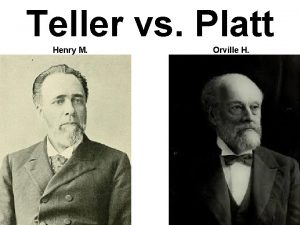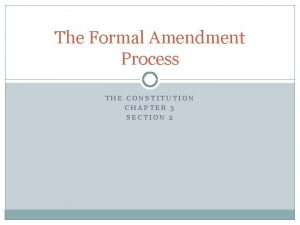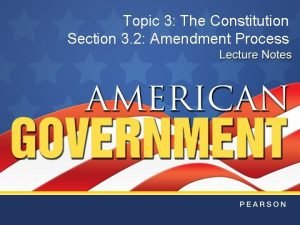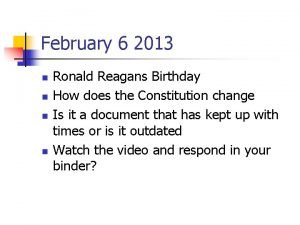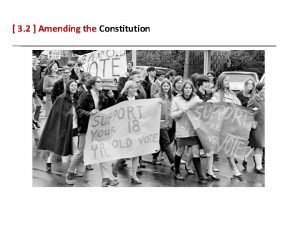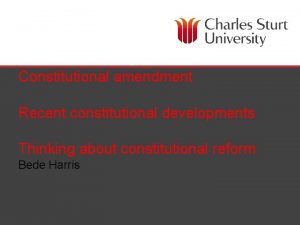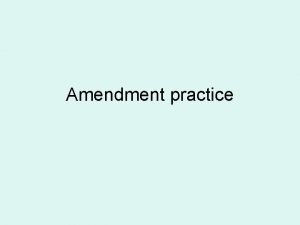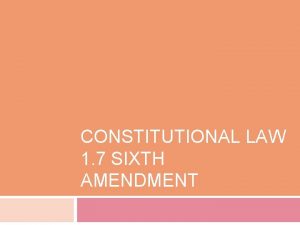The Constitutional Amendment Process SS 7 C 3




- Slides: 4

The Constitutional Amendment Process SS. 7. C. 3. 5 Explain the constitutional amendment process Article V of the U. S. Constitution outlines two methods for introducing amendments to the U. S. Constitution. These methods are: a) Two-thirds of each house of Congress vote to amend the U. S. Constitution followed by three-fourths of the state legislatures (or conventions of the state legislatures) approving the amendment. b) A national convention where two-thirds of all states are represented votes to introduce an amendment followed by three-fourths of the state legislatures (or conventions of the state legislatures) approving the amendment. Both circumstances require that three-fourths of the state legislatures (or their conventions) approve an amendment before it becomes part of the U. S. Constitution. The amendment procedure in many ways reflects a states’ rights approach, where the state legislatures or their conventions are responsible for ratifying all amendments.

The Constitutional Amendment Process

Analyzing the Constitutional Amendment Process The Framers included an amendment process so that the Constitution would be a “living document”. The amendment process requires “supermajorities” from the Congress and state governments. The requirement that 2/3 of each house of Congress approve any amendment exceeds the minimum 50%+1 required for votes on all bills. That three-fourths of the state legislatures must approve of any amendment plus the requirements in Congress speaks to bringing together regional, political, ideological and demographic differences for the sake of common goals. The Framers made the amendment process difficult because once an amendment is added to the Constitution it is part of it; no federal or state law may conflict with it. Once a proposed amendment is ratified, no part of it may be found unconstitutional because that amendment is now part of the Constitution. And, the U. S. Supreme Court sets precedents in its decision making such that, should a challenged state or federal law be found unconstitutional, that decision will have a long term impact (see Benchmark 3. 12 and Benchmark 2. 4). Finally, reversing an amendment requires another amendment which means that the same difficult process for amending the Constitution is needed in order to repeal an amendment.

Constitutional Amendments Over Time The Constitution has been amended 27 times; the first 10 amendments, the “Bill of Rights”, were ratified in 1791 (see Benchmark 2. 4). The Constitution was last amended in 1992. Many constitutional amendments exhibit a theme or timeframe in which they were ratified such as the Bill of Rights which reflects the Anti-Federalists’ fears that the federal government would infringe on basic personal and political rights (see Benchmark 1. 8). The 13 th, 14 th and 15 th Amendments (1865 -1870) (see Benchmark 3. 7) eliminated slavery, defined citizenship, and prevented the states from denying male citizens the right to vote. Three amendments deny states the right to limit voting rights to certain populations including the 15 th Amendment (1870) protecting racial minorities, the 19 th Amendment (1920) protecting women and the 26 th Amendment (1971) which extended voting rights to 18 to 21 year olds (see Benchmark 3. 7). Before the 15 th and 19 th Amendments were ratified, states could deny citizens voting rights based on race and sex. Before 1971, some states allowed only those 21 and older the right to vote.
